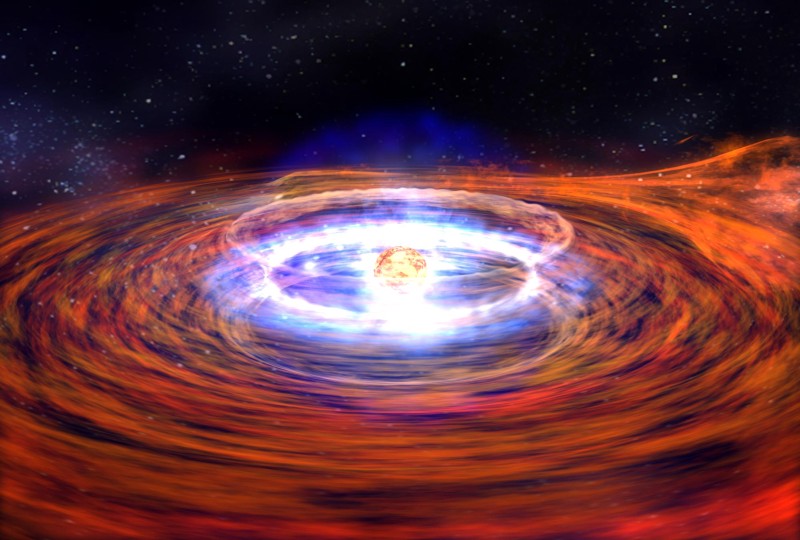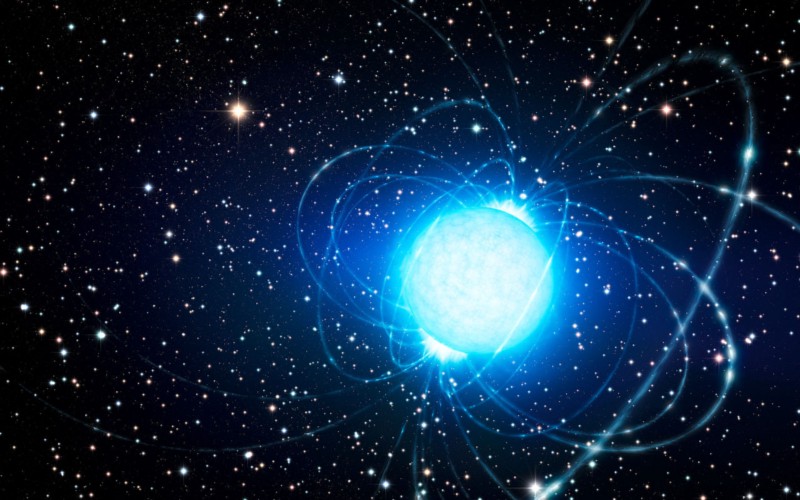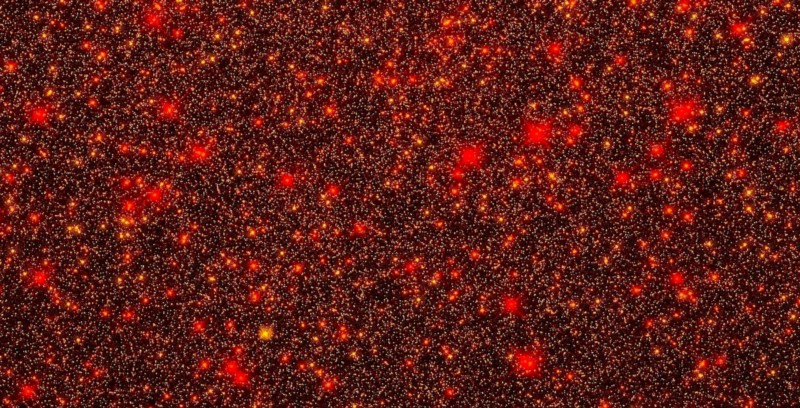Ask Ethan # 98: When will the stars go out?
Every week you send questions and suggestions to my rubric, and this week there were many excellent candidates, but I chose the shortest and cutest question, but also the deepest one at the same time. Steve sets it up:
Let's start a conversation with the life of the stars and walk through it to the very end in order to study this moment in detail.

When clouds of molecular gas collapse under the influence of gravity, there are always regions slightly more dense than others. Each part of the space where there is matter is trying to attract more and more matter, but these superdense regions attract matter more than others.
Since gravitational collapse is a swift and uncontrollable process, the more matter you attract, the faster additional matter is attracted. And although a large and scattered cloud can take millions and tens of millions of years to transform into a dense object, the transition from a simple collapsed state of dense gas to a new star cluster — where the densest regions ignite the synthesis reaction in their depths — takes only a few hundred thousand years old.
')

In the new star cluster the easiest to notice the brightest stars, which will be the most massive. These are the brightest, blue and hot of existing stars, their mass is hundreds of times greater than the mass of the Sun, and its brightness is in the millions. But, despite the fact that these are the most prominent stars, they are also the rarest, and constitute much less than 1% of all known stars. It is also the fastest-living stars, as they burn all nuclear fuel in just 1-2 million years.

When the fuel of these brightest stars ends, they die in a stunning explosion of type II supernova. At this moment, the inner core collapses to a neutron star (in the case of low-mass nuclei) or even to a black hole (for massive nuclei), and the outer layers are ejected into the interstellar medium. There, enriched gases will create the next generation of stars, providing those heavy elements to create stony planets, organic molecules, and in very rare and miraculous cases - life.

Black holes, by definition, immediately become black. They become so almost instantly, with the exception of the surrounding accretion disks and Hawking's low-temperature radiation.
But neutron stars are a completely different calico.

The neutron star collects all the energy in the core of the star and collapses extremely quickly. If something is squeezed very quickly, its temperature will rise - this is how the piston in a diesel engine works. The collapse of a star’s core to a neutron star is probably the ultimate example of rapid compression. For a few seconds or minutes, the core of iron, nickel, cobalt, silicon and sulfur with a diameter of many hundreds of thousands of kilometers shrinks to a ball no larger than 16 km in size. Its density increases quadrillion times, 10 15 , and the temperature rises to 10 12 K in the center and to 10 6 K on the surface.
And here comes the problem.

All this energy is stored in a collapsed star, and its surface is so hot that the star not only shines with light blue light in the visible part of the spectrum, but also radiates in the invisible X-ray range (not even ultraviolet)! An insane amount of energy is contained in this object, but it can be released into the Universe only through a surface that is very small.
The question is, how long will it take for a neutron star to cool? The answer depends on the part of the physics of neutron stars, which is not very well studied in practice: neutrino cooling! You see, if photons (radiation) are well absorbed by ordinary, baryonic matter, neutrinos can pass through a neutron star unhindered. In the fastest case, neutron stars can cool down and disappear from the visible part of the spectrum in 10–16 years, that is, “only” in a time that is a million times the age of the Universe. But in slow cases it can take from 10 20 to 10 22 years - that is, you have to wait a bit.
But there are other stars becoming black faster.

Most of the stars - 99% with a tail - do not become supernovae, and at the end of their life they slowly shrink to white dwarfs. Slowly, this happens only in comparison with supernovae: it takes tens and hundreds of thousands of years, not seconds and minutes, but it’s still fast enough to retain all the heat of the star’s core. The difference is that instead of its conclusion in a sphere with a diameter of 16 km, heat is enclosed in an object the size of “only” with the Earth, that is, a thousand times larger.
This means that although the temperatures of white dwarfs can be high — more than 20,000 K, that is, three times more than that of the Sun — they cool much faster than neutron stars.

Neutrino radiation for white dwarfs is negligible, that is, the main radiation comes from the surface. When calculating how quickly heat can leave the body through radiation, it turns out that white dwarfs (such as what comes out of the Sun) will cool down in about 10 14 - 10 15 years. This time will cool down to several degrees above absolute zero.
This means that after approximately 10 trillion years, or “only” 1000 times longer than the current age of the Universe, the surface temperature of a white dwarf will fall so that it will no longer be visible. At the expiration of this time, completely new objects will appear in the universe: black dwarfs.

So you have to disappoint you, Steve, today there are no black dwarfs. The universe is too young for them. The coldest of white dwarfs, according to our calculations, have lost no more than 0.2% of all energy since the very first of them appeared in the Universe. That is, for a white dwarf with a temperature of 20,000 K, this means that its temperature dropped to 19,960 K, and it is still a long way from the dark star.
It's funny how we imagine our Universe filled with luminous stars, gathered together in galaxies separated by huge spaces. By that time, when the first black dwarf appears, our group of galaxies will unite into one, Milkdromedu, most of the stars that ever arise, have already burned their own, and the rest will have the lowest mass, and will be the reddest and dimmest of all.

In addition, all other galaxies will leave our reach, thanks to dark energy. The chances for the existence of life will be extremely small, and the stars along with stellar corpses will start to fly out of the galaxy due to gravitational effects faster than new ones will be formed.
Against this background, however, for the first time in a long time new objects will appear. And although we can never see and perceive such an object, we know enough about nature in order to know not only that they will exist, but also how and when they will appear. And this in itself is one of the most amazing properties of science!
How long will it take stars to cool off after they use up their nuclear fuel? Will we have “black dwarfs”? Do they today?
Let's start a conversation with the life of the stars and walk through it to the very end in order to study this moment in detail.

When clouds of molecular gas collapse under the influence of gravity, there are always regions slightly more dense than others. Each part of the space where there is matter is trying to attract more and more matter, but these superdense regions attract matter more than others.
Since gravitational collapse is a swift and uncontrollable process, the more matter you attract, the faster additional matter is attracted. And although a large and scattered cloud can take millions and tens of millions of years to transform into a dense object, the transition from a simple collapsed state of dense gas to a new star cluster — where the densest regions ignite the synthesis reaction in their depths — takes only a few hundred thousand years old.
')

In the new star cluster the easiest to notice the brightest stars, which will be the most massive. These are the brightest, blue and hot of existing stars, their mass is hundreds of times greater than the mass of the Sun, and its brightness is in the millions. But, despite the fact that these are the most prominent stars, they are also the rarest, and constitute much less than 1% of all known stars. It is also the fastest-living stars, as they burn all nuclear fuel in just 1-2 million years.

When the fuel of these brightest stars ends, they die in a stunning explosion of type II supernova. At this moment, the inner core collapses to a neutron star (in the case of low-mass nuclei) or even to a black hole (for massive nuclei), and the outer layers are ejected into the interstellar medium. There, enriched gases will create the next generation of stars, providing those heavy elements to create stony planets, organic molecules, and in very rare and miraculous cases - life.

Black holes, by definition, immediately become black. They become so almost instantly, with the exception of the surrounding accretion disks and Hawking's low-temperature radiation.
But neutron stars are a completely different calico.

The neutron star collects all the energy in the core of the star and collapses extremely quickly. If something is squeezed very quickly, its temperature will rise - this is how the piston in a diesel engine works. The collapse of a star’s core to a neutron star is probably the ultimate example of rapid compression. For a few seconds or minutes, the core of iron, nickel, cobalt, silicon and sulfur with a diameter of many hundreds of thousands of kilometers shrinks to a ball no larger than 16 km in size. Its density increases quadrillion times, 10 15 , and the temperature rises to 10 12 K in the center and to 10 6 K on the surface.
And here comes the problem.

All this energy is stored in a collapsed star, and its surface is so hot that the star not only shines with light blue light in the visible part of the spectrum, but also radiates in the invisible X-ray range (not even ultraviolet)! An insane amount of energy is contained in this object, but it can be released into the Universe only through a surface that is very small.
The question is, how long will it take for a neutron star to cool? The answer depends on the part of the physics of neutron stars, which is not very well studied in practice: neutrino cooling! You see, if photons (radiation) are well absorbed by ordinary, baryonic matter, neutrinos can pass through a neutron star unhindered. In the fastest case, neutron stars can cool down and disappear from the visible part of the spectrum in 10–16 years, that is, “only” in a time that is a million times the age of the Universe. But in slow cases it can take from 10 20 to 10 22 years - that is, you have to wait a bit.
But there are other stars becoming black faster.

Most of the stars - 99% with a tail - do not become supernovae, and at the end of their life they slowly shrink to white dwarfs. Slowly, this happens only in comparison with supernovae: it takes tens and hundreds of thousands of years, not seconds and minutes, but it’s still fast enough to retain all the heat of the star’s core. The difference is that instead of its conclusion in a sphere with a diameter of 16 km, heat is enclosed in an object the size of “only” with the Earth, that is, a thousand times larger.
This means that although the temperatures of white dwarfs can be high — more than 20,000 K, that is, three times more than that of the Sun — they cool much faster than neutron stars.

Neutrino radiation for white dwarfs is negligible, that is, the main radiation comes from the surface. When calculating how quickly heat can leave the body through radiation, it turns out that white dwarfs (such as what comes out of the Sun) will cool down in about 10 14 - 10 15 years. This time will cool down to several degrees above absolute zero.
This means that after approximately 10 trillion years, or “only” 1000 times longer than the current age of the Universe, the surface temperature of a white dwarf will fall so that it will no longer be visible. At the expiration of this time, completely new objects will appear in the universe: black dwarfs.

So you have to disappoint you, Steve, today there are no black dwarfs. The universe is too young for them. The coldest of white dwarfs, according to our calculations, have lost no more than 0.2% of all energy since the very first of them appeared in the Universe. That is, for a white dwarf with a temperature of 20,000 K, this means that its temperature dropped to 19,960 K, and it is still a long way from the dark star.
It's funny how we imagine our Universe filled with luminous stars, gathered together in galaxies separated by huge spaces. By that time, when the first black dwarf appears, our group of galaxies will unite into one, Milkdromedu, most of the stars that ever arise, have already burned their own, and the rest will have the lowest mass, and will be the reddest and dimmest of all.

In addition, all other galaxies will leave our reach, thanks to dark energy. The chances for the existence of life will be extremely small, and the stars along with stellar corpses will start to fly out of the galaxy due to gravitational effects faster than new ones will be formed.
Against this background, however, for the first time in a long time new objects will appear. And although we can never see and perceive such an object, we know enough about nature in order to know not only that they will exist, but also how and when they will appear. And this in itself is one of the most amazing properties of science!
Source: https://habr.com/ru/post/398473/
All Articles